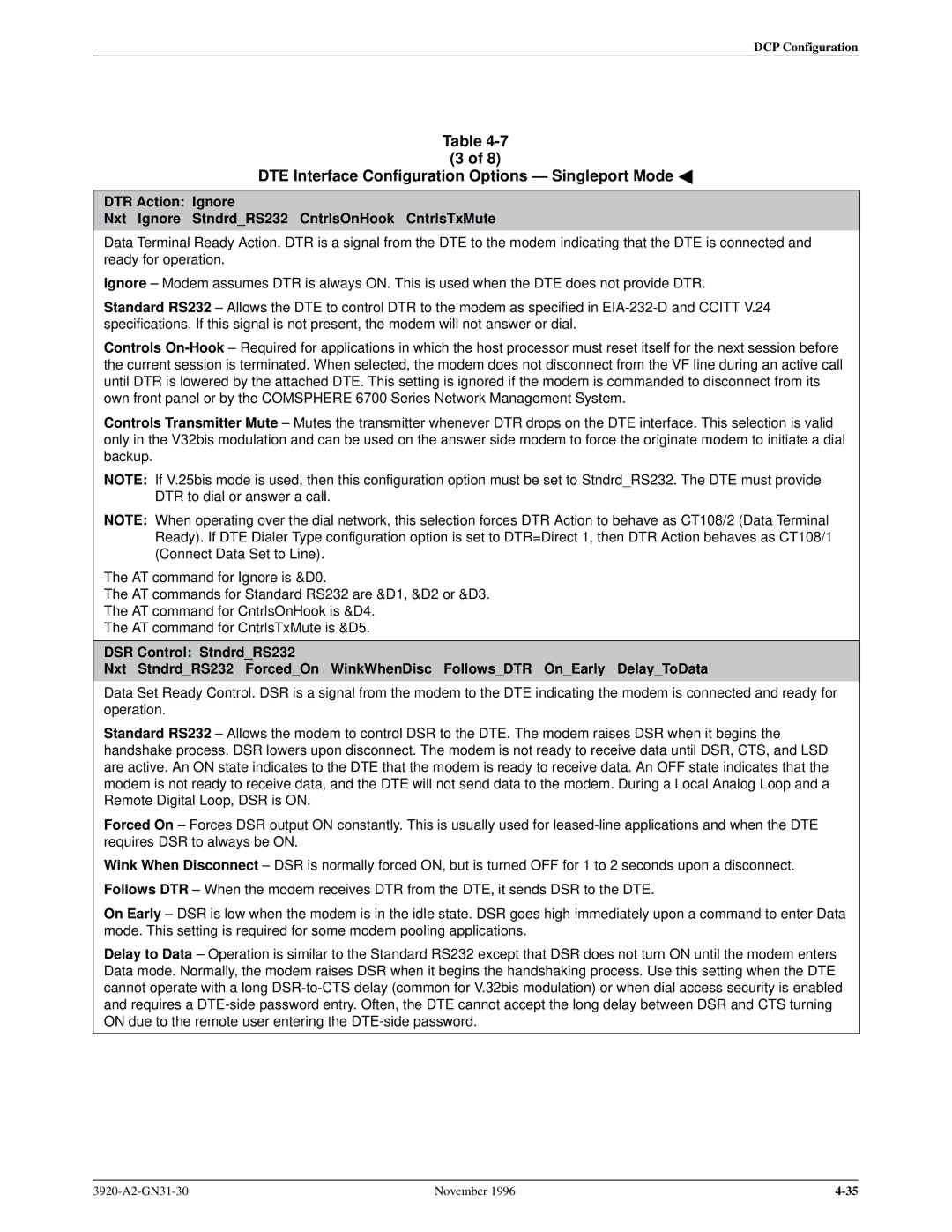
DCP Configuration
Table
(3 of 8)
DTE Interface Configuration Options Ð Singleport Mode A
DTR Action: Ignore
Nxt Ignore Stndrd_RS232 CntrlsOnHook CntrlsTxMute
Data Terminal Ready Action. DTR is a signal from the DTE to the modem indicating that the DTE is connected and ready for operation.
Ignore ± Modem assumes DTR is always ON. This is used when the DTE does not provide DTR.
Standard RS232 ± Allows the DTE to control DTR to the modem as specified in
Controls
Controls Transmitter Mute ± Mutes the transmitter whenever DTR drops on the DTE interface. This selection is valid only in the V32bis modulation and can be used on the answer side modem to force the originate modem to initiate a dial backup.
NOTE: If V.25bis mode is used, then this configuration option must be set to Stndrd_RS232. The DTE must provide DTR to dial or answer a call.
NOTE: When operating over the dial network, this selection forces DTR Action to behave as CT108/2 (Data Terminal Ready). If DTE Dialer Type configuration option is set to DTR=Direct 1, then DTR Action behaves as CT108/1 (Connect Data Set to Line).
The AT command for Ignore is &D0.
The AT commands for Standard RS232 are &D1, &D2 or &D3.
The AT command for CntrlsOnHook is &D4.
The AT command for CntrlsTxMute is &D5.
DSR Control: Stndrd_RS232
Nxt Stndrd_RS232 Forced_On WinkWhenDisc Follows_DTR On_Early Delay_ToData
Data Set Ready Control. DSR is a signal from the modem to the DTE indicating the modem is connected and ready for operation.
Standard RS232 ± Allows the modem to control DSR to the DTE. The modem raises DSR when it begins the handshake process. DSR lowers upon disconnect. The modem is not ready to receive data until DSR, CTS, and LSD are active. An ON state indicates to the DTE that the modem is ready to receive data. An OFF state indicates that the modem is not ready to receive data, and the DTE will not send data to the modem. During a Local Analog Loop and a Remote Digital Loop, DSR is ON.
Forced On ± Forces DSR output ON constantly. This is usually used for
Wink When Disconnect ± DSR is normally forced ON, but is turned OFF for 1 to 2 seconds upon a disconnect.
Follows DTR ± When the modem receives DTR from the DTE, it sends DSR to the DTE.
On Early ± DSR is low when the modem is in the idle state. DSR goes high immediately upon a command to enter Data mode. This setting is required for some modem pooling applications.
Delay to Data ± Operation is similar to the Standard RS232 except that DSR does not turn ON until the modem enters Data mode. Normally, the modem raises DSR when it begins the handshaking process. Use this setting when the DTE cannot operate with a long
November 1996 |
